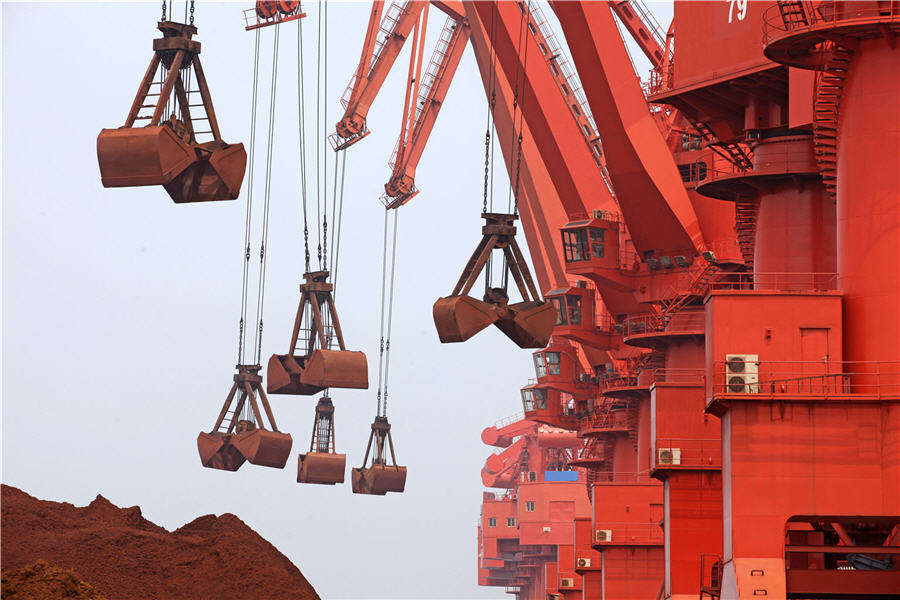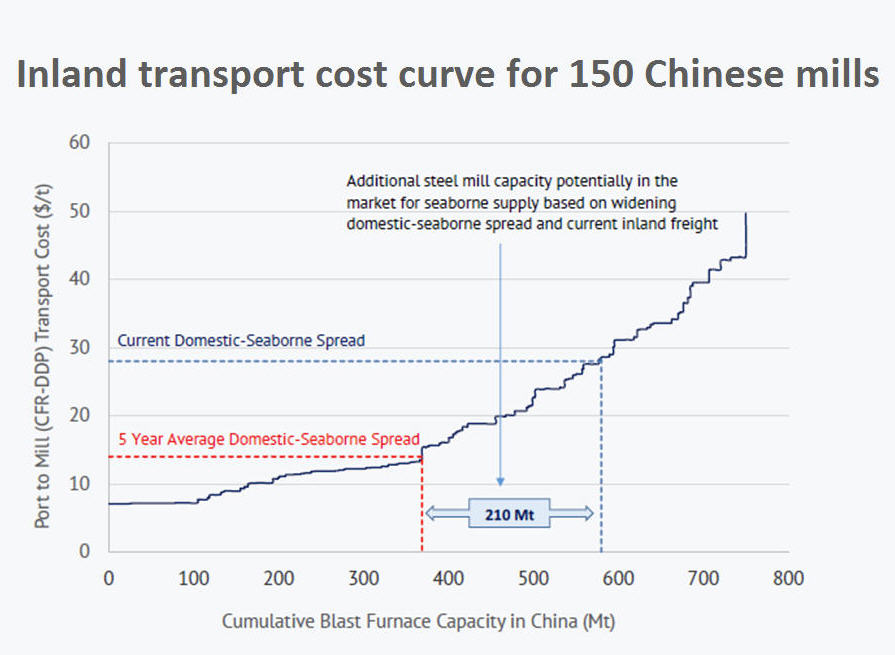China’s inland mills could be in market for 300mt seaborne iron ore
New research shows inland Chinese steel mills are paying a 35% premium over seaborne benchmark prices opening up new opportunities for exporters

With prices down 40% since the start of the year it’s easy to lose sight of the fact that the global iron ore trade is still growing robustly.
New and significant market opportunities can still open up, even in China which already consumes more than two-thirds of the seaborne trade.
The issue of the influence of Chinese domestic supply on iron ore pricing is a vexing one. The country’s miners produce some 350 million – 400 million tonnes a year on a 62% Fe-basis, although reliable stats are lacking (this figure is calculated working backwards from pig iron production).
Two short years ago $120 a tonne were considered a price floor; the thinking being that any extended period below this level would drive out high cost Chinese iron ore miners struggling with grades as low as 15%.
When $120 came and went, $100 was considered the level swing producers would abandon the market. With ore hovering either side of $80 for more than a month assumptions about the market are being severely tested.
A trenchant new research report by Minerals Value Service shows small miners are not just battling the Big 4 producers (or if you count Gina Rinehart and the Roy Hill project, the Big 5) but market inefficiency in China.
While domestic Chinese iron ore miners have been able to successfully defend prices up to now, pressure is definitely building says author of the report, Nick Pickens:
A feature of the latest price slide has been the relative performance of China’s domestic concentrate when compared to iron ore imports.
According to Platts, the spread between the 66% domestic concentrate index price (ex-VAT) and the IODEX, is now at $28/t, this compares to an historic average of around $15/t and parity at the start of the year, at a time when the IODEX was trading north of $120/t. If normalized for Fe content, the contrast is even higher, with the domestic product historically at a discount compared to $22/t premium today.
We believe today’s index differential implies an additional 210 million tonnes of steel capacity can look to seaborne supply as a competitive alternative. We expect this spread will begin to close as an increasing amount of capacity is attracted by “cheaper” imports.
While the inland steel mill capacity in the market for cheaper imports translates (very) roughly to 300 million tonnes of iron ore, Pickens cautions on extrapolating too much from these numbers.
The supply could come from long term agreements and captive mines and given the close relationship between local governments, mills and miners some blast furnaces may be obliged to take ore even at a 35% premium to the spot import price.
The Chinese government may also be wary of increasing already heavy reliance on supply from Australia or Brazil and expose the steel industry – a crucial part of the country’s growth over the last decade – to even wilder import price fluctuations.

Source: Minerals Value Service
More News
Nornickel believes 2026 will bring dividends, CEO says
Nornickel did not pay full-year dividends for 2022, 2023 and 2024.
December 27, 2025 | 07:42 am
{{ commodity.name }}
{{ post.title }}
{{ post.date }}




Comments
Thomas Borgsmidt
You should the other possibility: Demand for steel in China is falling – very much so.